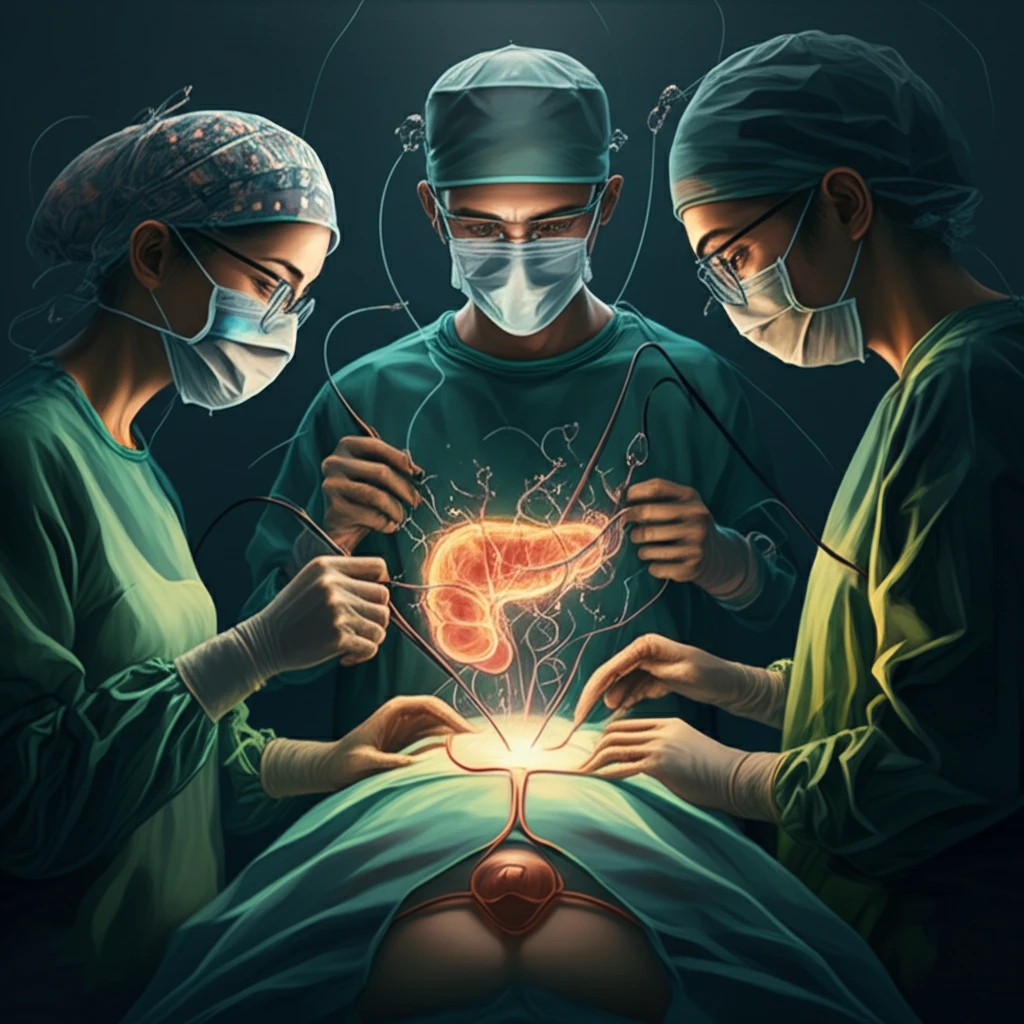
Beyond the Scalpel: How Laparoscopic Surgery is Evolving for Complex Pancreatic Conditions
"Discover the innovative approach of laparoscopic cystogastrotomy in managing pancreatic pseudocysts, even after major abdominal surgeries."
Pancreatic pseudocysts, those walled-off collections of fluid that can arise from pancreatitis or trauma, often bring a wave of discomfort and disruption to daily life. Traditionally, these cysts have been addressed through open surgical techniques, endoscopic procedures, or laparoscopic interventions. However, the landscape shifts when these cysts develop after major abdominal operations, presenting a unique set of challenges for both patients and surgeons.
The spotlight shines on a recent case that navigates this complex scenario: a 55-year-old woman with a history of alcohol-induced chronic pancreatitis, who previously underwent a pylorus-preserving pancreaticoduodenectomy, found herself facing symptomatic pancreatic pseudocysts. This situation prompted a deeper look into the potential of laparoscopic cystgastrotomy—a minimally invasive surgical approach—to offer relief and improved quality of life.
This article delves into the specifics of this case, highlighting the methods used and the encouraging results achieved. It underscores the evolving role of laparoscopic surgery in managing complex pancreatic conditions and its potential to provide safer, less invasive options for patients who have already undergone significant abdominal procedures.
The Case: Laparoscopic Cystgastrotomy After Major Surgery

The patient, a 55-year-old female, presented with a week-long episode of intense left upper quadrant abdominal pain, accompanied by early satiety, bloating, and nausea. Her medical history was significant for chronic alcoholism and pancreatitis, as well as a previous pylorus-preserving pancreaticoduodenectomy performed two years prior for a benign lesion. Despite initial non-operative management, her symptoms persisted, leading to the decision to proceed with laparoscopic cystenteric drainage.
- Careful placement of trocars (small surgical instruments) to access the abdomen.
- Lysis of dense omental and small bowel adhesions from the previous surgery.
- Creation of an 8-cm anterior gastrotomy (incision in the stomach) using an ultrasonic scalpel.
- Needle aspiration to confirm the fluid’s characteristics.
A Promising Path Forward
This case report offers valuable insights into the feasibility and safety of laparoscopic cystenteric drainage for pancreatic pseudocysts, even in patients who have previously undergone major abdominal operations. While further research is needed to assess the long-term durability and benefits of this approach, it represents a significant step forward in the evolution of minimally invasive surgical techniques for managing complex pancreatic conditions. It highlights the importance of tailoring surgical strategies to individual patient needs and leveraging advanced technologies to improve outcomes and quality of life.
